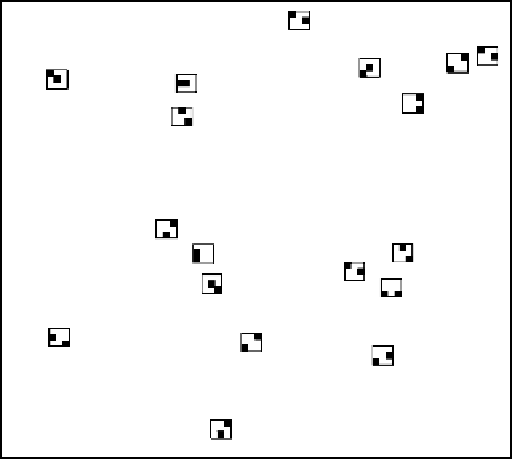Geoscience Reference
In-Depth Information
FIGURE 10.2
Example of a two-stage sample of 18 primary units and 2 secondary units from each, for a
total of 36 sample sites. Each primary unit was defined to be a 3 × 3 block of 9 secondary units.
Primary and secondary units were chosen by simple random sampling.
In Figure 10.3, a simple random sample of size 16 was drawn from each of
three strata. Because the strata in this example differ in size, the density of
sampled sites in each strata varies. When this happens, the sample is said
to be nonproportionally allocated. If the density of sites is equal in all strata
or is proportional to strata size, the sample is said to have proportional allo-
cation. In Figure 10.3, the left-hand stratum is twice as large as the other
two. Proportional allocation would have been achieved if sample sizes were
36/2 = 18 in the large strata and 36/4 = 9 in each of the two smaller strata.
Proportional allocation can be important if poststratification of the sample is
anticipated. Poststratification is easy under proportional allocation because
all sites are included with equal probability. If allocation is not proportional,
poststratification introduces unequal probabilities into the analysis, which
yields a statistically valid but complicated analysis.
In ecological studies, strata are usually geographic regions of interest or
are based on the perceived level of a target variable. For example, a study
of fish populations in rivers might stratify based on elevation under the
assumption that higher-elevation rivers contain more (or less) fish than
lower-elevation rivers. Another fish study might attempt to classify stream
segments into low-, medium-, or high-productivity strata and draw samples
for each productivity level.

